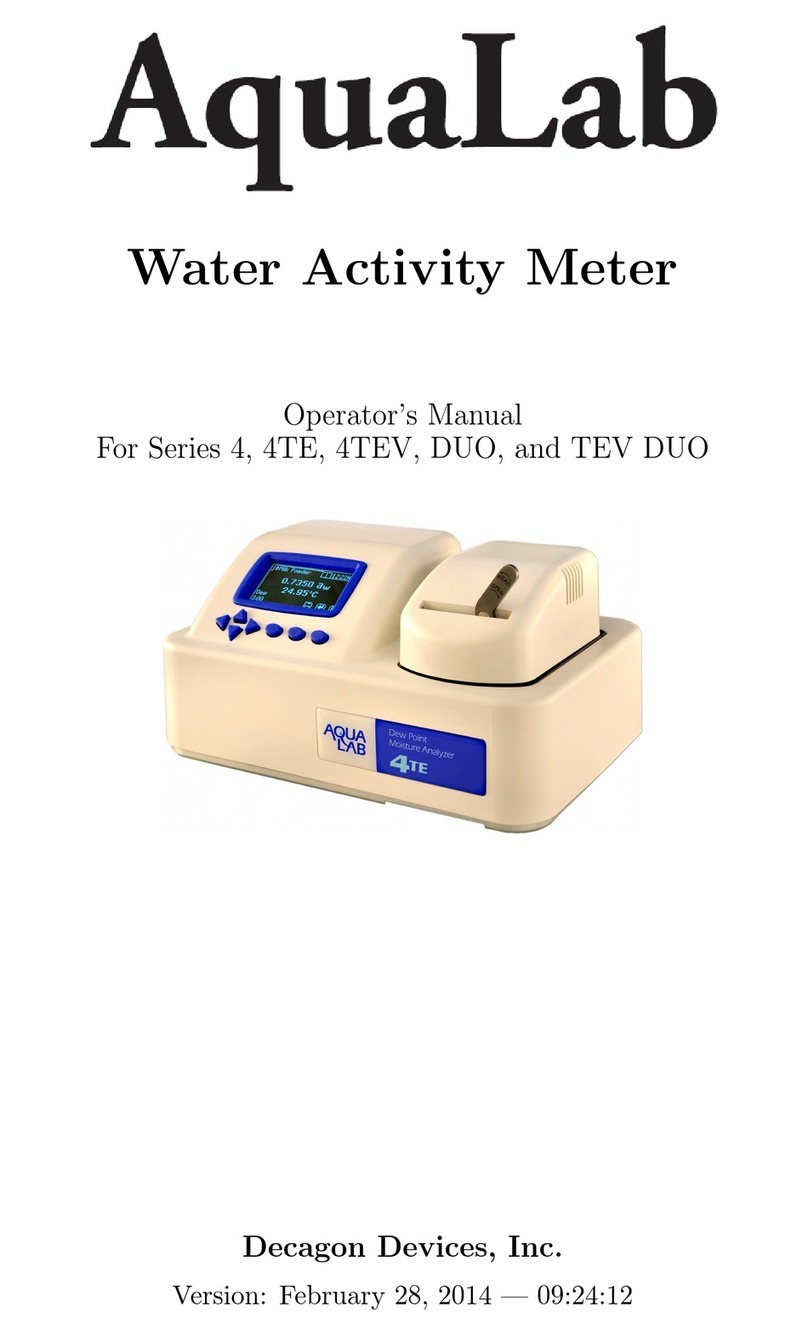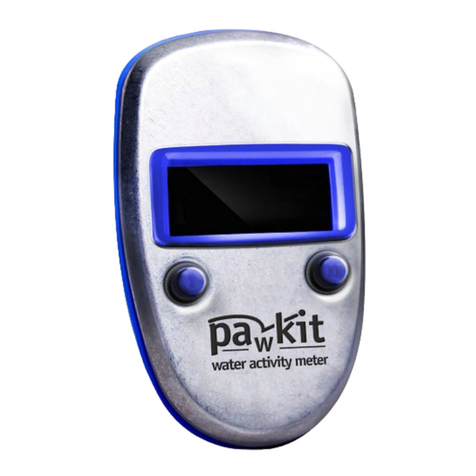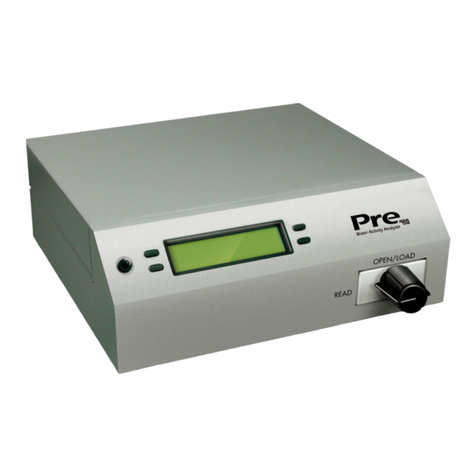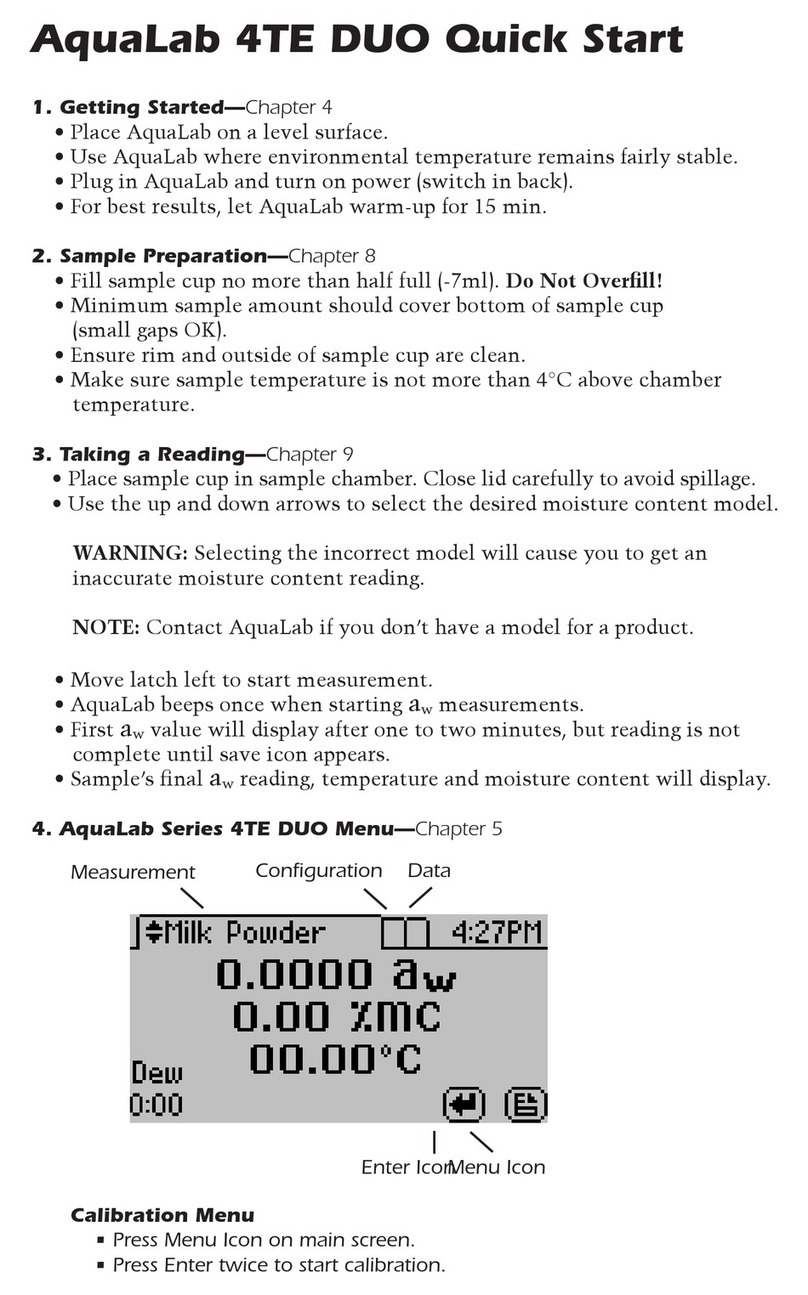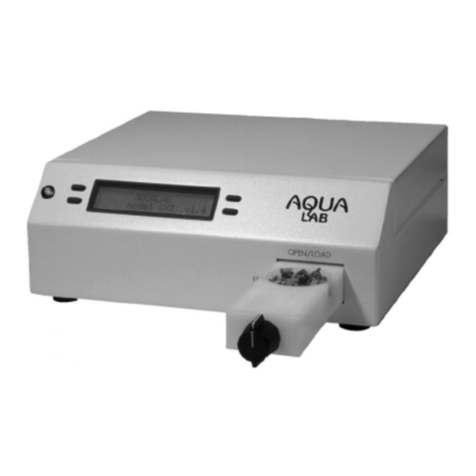
1 INTRODUCTION AquaLab
before operating AquaLab to ensure that the instrument performs to
its full potential.
1.3 Warranty
AquaLab has a 30-day satisfaction guarantee and a one year warranty
on parts and labor. Your warranty is automatically validated upon
receipt of the instrument. We contact our customers within the first
90 days of your purchase to see how the AquaLab is working for you.
1.4 Seller’s Liability
Seller warrants new equipment of its own manufacture against de-
fective workmanship and materials for a period of one year from the
date of receipt of equipment.
Note: We do not consider the results of ordinary wear and tear,
neglect, misuse, accident and excessive deterioration due to corro-
sion from any cause as defects.
The Seller’s liability for defective parts shall in no event exceed the
furnishing of replacement parts Freight On Board the factory where
originally manufactured. Material and equipment covered hereby
which is not manufactured by Seller shall be covered only by the
warranty of its manufacturer. Seller shall not be liable to Buyer for
loss, damage or injuries to persons (including death), or to property
or things of whatsoever kind (including, but not without limitation,
loss of anticipated profits), occasioned by or arising out of the instal-
lation, operation, use, misuse, nonuse, repair, or replacement of said
material and equipment, or out of the use of any method or process
for which the same may be employed. The use of this equipment
constitutes the buyer’s acceptance of the terms set forth in this war-
ranty. There are no understandings, representations, or warranties
of any kind, express, implied, statutory or otherwise (including, but
without limitation, the implied warranties of merchantability and
fitness for a particular purpose), not expressly set forth herein.
2












